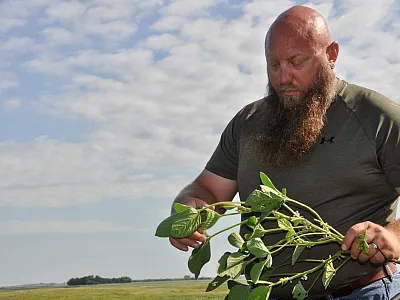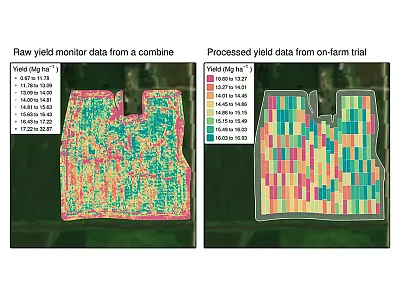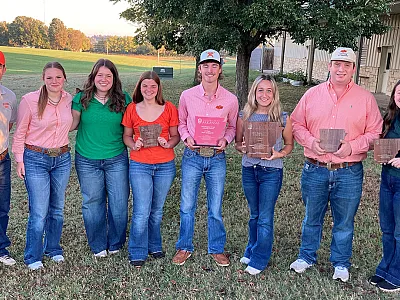Citrus, Too, Benefits From Cover Crops
While growing citrus is different from growing row crops, research shows citrus orchards also benefit from cover crops
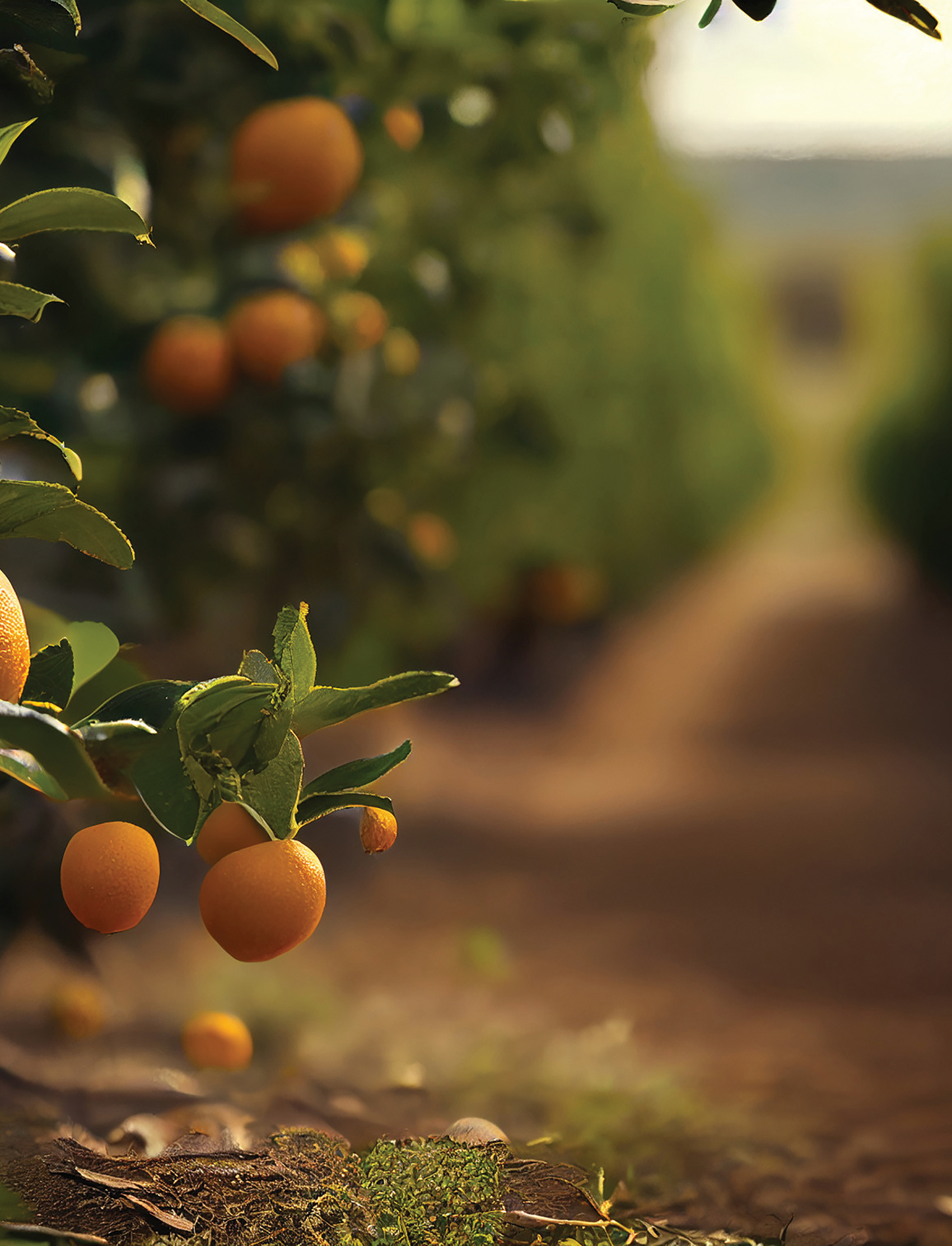

Cover crops can provide numerous benefits such as protection from the vagaries of extreme weather, improved water filtration, improved soil organic matter and nutrient retention, and reduction of weeds. They’re common in row crops but not as much in citrus. Some researchers think they should be. This article will highlight some of the benefits and challenges of cover crops in citrus and how to use them. Earn 1 CEU in Crop Management by reading this article and taking the quiz.
Protection from the vagaries of extreme weather, improved water filtration, improved soil organic matter and nutrient retention, reduction of weeds—the benefits of cover crops are plenty. So are the considerations, chief among them being water management. Do I have enough water, or does my cover crop risk leaving my cash crop with too little water? Or, on the flip side, is there too much water and does my cover crop help reduce runoff by improving infiltration? California, the number one citrus producer in the U.S., has seen both situations in the last two years. Time and time again, research—and on‐farm experience—has shown the benefits of cover cropping. It’s now a common practice in row crops, but it’s not as common in citrus agriculture. Perhaps it should be, researchers say.
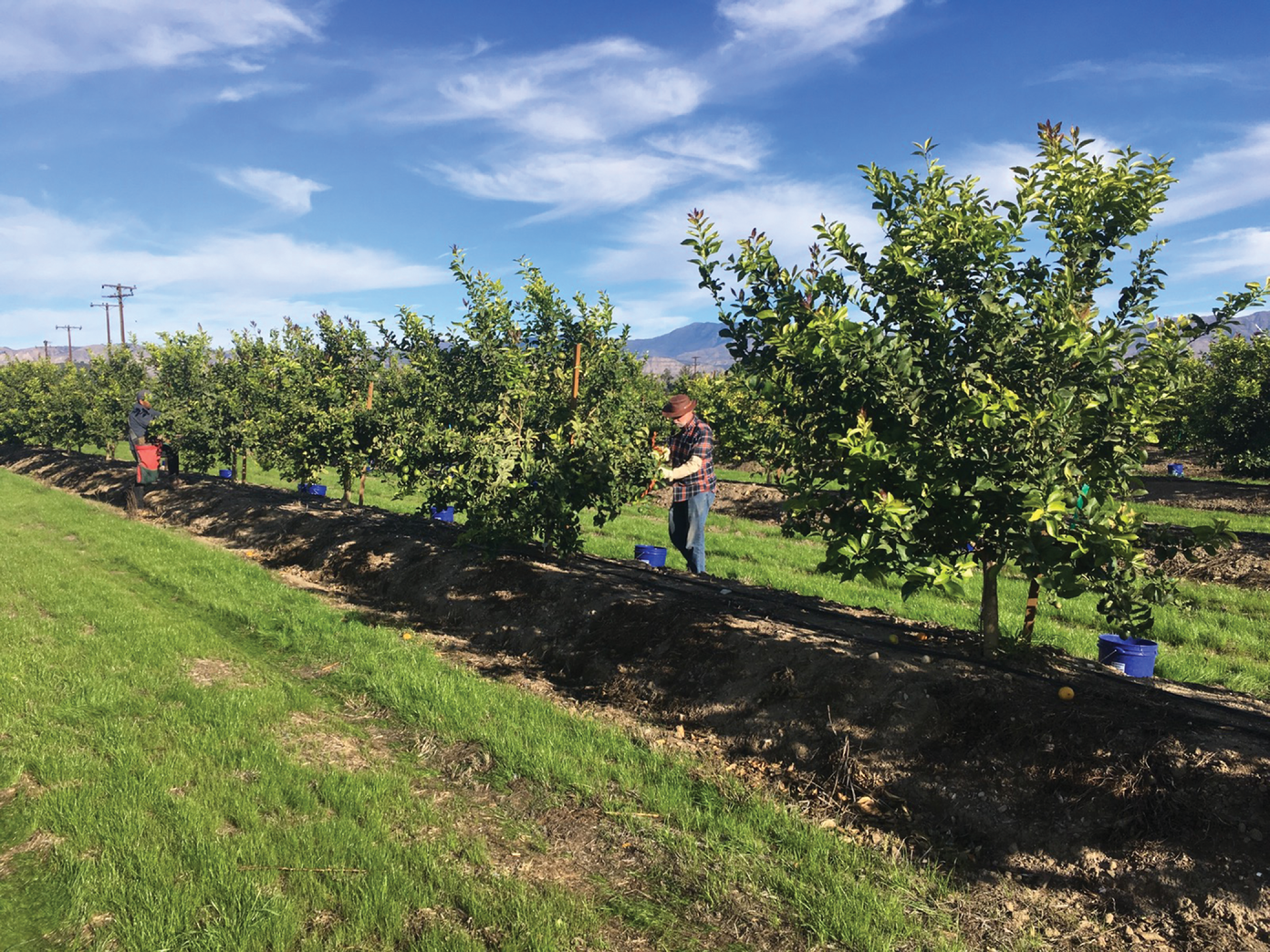
A Big Industry Facing Extreme Conditions
The annual global citrus market value is north of $7 billion. Citrus, including oranges, tangerines/mandarins, lemons, limes, grapefruit, and more, is grown in 140 countries with China leading the way. Other major producers include Brazil, India, Mexico, the U.S., and Spain. Within the U.S., California produces 60% of the nation’s citrus, followed by Florida at about 38%, and Texas and Arizona making up the remaining 2%. California produces the most fresh citrus while Florida produces the most oranges for juice.
Each growing area experiences different extreme conditions. Florida routinely experiences extreme rainfall, hurricanes, and extreme heat. Arizona and California are both prone to drought while also experiencing extreme heat. Texas gets hit with both drought and extreme rainfall from hurricanes, plus extreme heat. And, of course, there are differences within each state as well. Florida on average is pretty wet, with a statewide average annual rainfall exceeding 54 inches, but some parts get closer to 70 inches a year. Parts of Northern California get around 50 inches of rain a year while parts of Southern California barely get 5 inches of rain a year. Temperatures also vary significantly: Northern California and the Central Valley can experience freezing temperatures in the winter while Ventura, Los Angeles, San Diego, and other Southern California counties rarely freeze. Even within counties, from farm to farm, there are significant differences, says Ben Faber, an extension adviser at the University of California Division of Agriculture and Natural Resources. It’s hard to generalize what conditions each farm experiences, Faber says.
Orchards in California tend to be far smaller than in Florida. There, smaller growers have been forced out in recent years, in part because of a disease that’s decimating the state’s citrus and threatening citrus worldwide, says Sarah Strauss, a soil microbiologist at the University of Florida’s Southwest Florida Research and Education Center. The disease is called Huanglongbing, HLB, or citrus greening. It’s spread by a disease‐infected insect called the Asian citrus psyllids. Once a tree is infected, it produces fruit that is green, misshapen, and bitter—unsaleable and inedible. Within a couple of years, the trees die. There is no cure. And no one has been able to halt its spread, as of yet. Since 1998, when HLB was first detected in Florida, seven years after the psyllids were first found in the state, more than half the state’s acres of orange trees have been killed by the disease. The insect and disease have also been detected in California, but to a far lesser extent, so far.
Because protecting the trees is incredibly difficult (like putting bags over them), growers are turning to anything that could possibly help. And that, Strauss says, could potentially include cover cropping. Maybe.
More Resilient Trees
Cover crops tend to make cash crops, including citrus trees, more resilient. In Florida, research over the last few years has shown that cover crops tend to increase the soil organic matter and significantly impact the soil microbiome. Florida’s citrus soil is typically 98% beach sand with less than 1% organic matter, Strauss says. Improving soil organic matter—usually done through heavy or frequent application of compost—and adding inorganic fertilizers like nitrogen improves nutrient availability and retention and growing conditions for the fruit trees. But cover crops can also significantly increase soil carbon and nitrogen contents of soils as Strauss and her colleagues reported in Biology and Fertility of Soils in April. Cover crops also have been shown to significantly improve the number and types of bacteria and fungi, Strauss says.
Strauss and her team recently completed a three‐year experiment on how cover crops affect soil health in orange groves in southwestern Florida, the state’s heaviest orange‐producing region. The team has a longer, eight‐year ongoing study (in Year 5 right now) also focused on soil health indicators, plus a couple of newer studies getting underway. In the three‐year study, the team found increases in the abundance and diversity of bacteria and fungi and increases in nitrogen‐cycling bacteria each year in the experiment, which was surprising, Strauss says, since altering soil microbes can be a long‐term process, not a quick fix.
The “robust microbial” changes that the team observed were “strongly and positively linked to increased soil carbon and nitrogen availability,” the team reported. “Together, these results suggest that cover crops drive variations in soil nutrient cycling and the soil microbiome in nutrient‐poor citrus orchard soils.” They improve nutrient availability, which could potentially improve root growth of the trees, Strauss says.
“I was super impressed with and not expecting the shift in some of the microbial functions that we saw with these different cover crop varieties,” Strauss says. There were even shifts, for example, in the types of denitrifying genes, which represent an exciting and encouraging change in the soil over a very short period. These results “are an early sign that something’s happening—the soil microbiome is certainly changing.”
The hope, Strauss says, is that bettering the soil eventually results in yield or fruit quality increases. In their studies, however, it hasn’t. Strauss suspects two reasons: One, most of their research has been on old trees—35 years old or so—which she says aren’t likely to want to “change their ways at that point in their life, any more than a 35‐year‐old person wants to change.” (While fruit trees in California often live and produce for 50 to 100 years, in Florida, most producing trees are far younger. There’s a much higher turnover in orchards, especially since citrus greening has decimated the industry, Strauss notes.) And two, the duration of the experiments is too short to see much change in yield or fruit quality. Strauss and her team are now conducting some studies with younger trees, some six or eight years old, and even some baby trees planted just weeks before the experiment started.
“We’re hoping that they might respond a little bit faster,” she says. “That would be really encouraging, even just some changes in root growth.” The microbiome changes are going in the right direction, she says—“early indicators that something is happening that will hopefully have a bigger impact.”
Additional Benefits
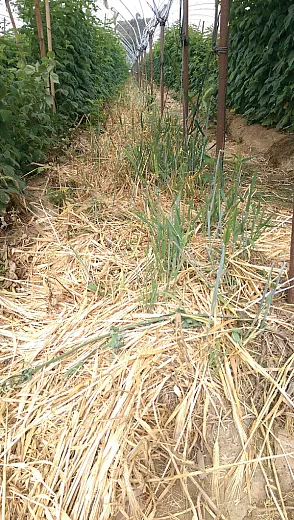
If the soil changes were to help with citrus greening, that would have a huge impact on Florida’s citrus industry. “We don’t fully understand how the disease works,” Strauss says, but there is potential. One of the impacts of citrus greening on a citrus tree is a reduction in nutrient uptake. It’s possible having a more active microbiome in these citrus orchards could help with citrus greening by increasing nutrient availability for the diseased trees. “Building more organic matter, making these microbes more active, increasing nutrient cycling, assuming things like that have a more positive impact on root growth, that can help with tree health and nutrient uptake.”
Another way cover crops may be able to help reduce the spread of citrus greening is if cover crops can provide homes to “biological control agents”—basically predators for the psyllids that spread the disease, Faber says. Some plants like alyssum can be significant attractants for predators like syrphid flies that eat psyllids, he notes.
At the very least, though, Strauss says, the changes to the soils induced by cover crops should reduce the need for fertilizer, herbicides, and other inputs. You wouldn’t need herbicides to control weeds if you’re planting cover crops in the rows between trees. Weeds grow like crazy in Florida’s warm, wet climate, Strauss notes, so reducing herbicides by using cover crops is good for the pocketbook and environment. And if the cover crops help reduce nitrogen leaching and improve uptake, you’d reduce the need for fertilizer as well, she says. In Florida, nitrogen and other fertilizers like compost are spread frequently throughout the year.
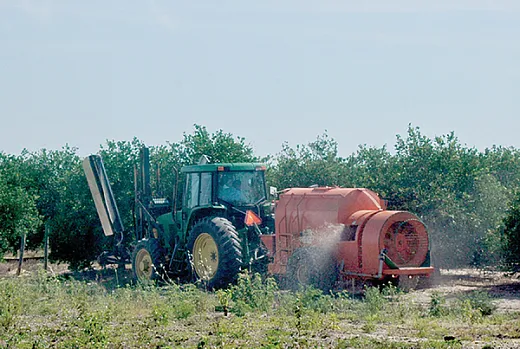
Still other benefits of cover crops include improved water infiltration and decreased runoff, Faber says. When you get extreme rains, you often see water and sediments pouring off bare ground. With cover crops—or even weeds—growing in row middles between trees, you’ll have less sediment loss, less nutrient loss, he says. Plus, in drought‐prone California, any increase in infiltration is a bonus for the land and cash crop.
How to Use Cover Crops in Citrus
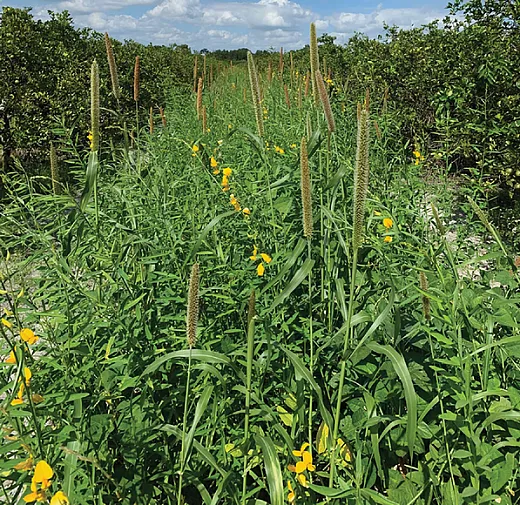
Cover cropping in citrus is pretty different from cover cropping in annual row crops. Citrus trees are large perennial evergreens. Orange trees are picked once a year. Coastal lemon trees might be picked three or four times a year. But either way, once the crop is harvested, the trees aren’t terminated, the way row crops are. Citrus trees have to be managed for pests and nutrients, like row crops, but the stakes are higher because these trees live and produce for decades if managed well. Citrus fruit takes a year to mature, so the time frame for looking for changes in yield is longer. Another difference is that in citrus, you want to let your cover crop go to seed. You want to build up that seed bank and hopefully reduce the amount of seed you need to plant the next year, Strauss says. In row crops, growers terminate the cover crop prior to it going to seed.

In Florida, cover cropping usually involves planting annual crops in the middle of the rows of trees twice a year around the rainy season. Plant them at the beginning of the rainy season in June and let them grow all summer long, Strauss says. They’ll naturally die back by the end of the rainy season around late October, early November. Before the rainy season ends, growers should mow the cover crops or do a very shallow disk—it cannot be deep as citrus roots are shallow and cutting up roots encourages disease—and then plant the next round of seeds while there’s still some rain. Once they’re in the ground, she says, don’t fertilize or irrigate them; just rely on Mother Nature. When you harvest your cash crop in the winter, some of the cover crop will get terminated by the machinery going up and down the rows. Perennials are also an option, she says, because you want them to take hold and come back year after year. Some growers have had some success with perennial peanuts, but her team hasn’t had the chance yet to research perennials.
Perennials are a great option in California, Faber says, if you have enough water. Annuals also work. The largest lemon operation in the state farms 2,000 acres of citrus, using ryegrass cover crops on their whole orchard, he notes. But most of the smaller growers don’t use cover crops. Most in Florida don’t either.
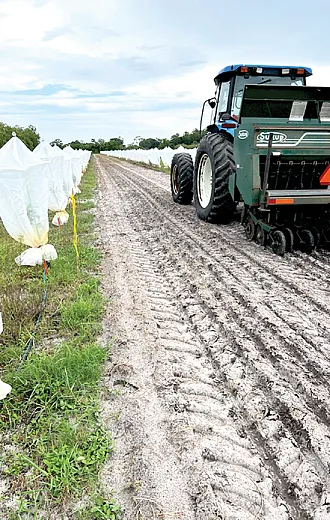
Even if you don’t want to use cover crops, the benefits of letting something grow in between the trees are real, Faber says. In California, most growers go for “clean cultivation where nothing but the trees grow. It’s a desert out there. I hate to see an orchard that is weed free,” Faber says. There are some bad actors, some noxious weeds that shouldn’t be allowed to grow, he says, but “most wild growing things in orchards are manageable, and they should be encouraged.”
If a producer chooses to plant a cover crop rather than just allowing weeds to grow—which is still better than bare ground—the best covers seem to be a mix of legumes and non‐legumes, Strauss’s team found. That seems to provide the best nutrients and microbiome changes. Some mixes might contain buckwheat, browntop millet, sunflower, sunn hemp, winter rye, clover, or, surprising to Strauss, daikon radish.
Choosing your cover crops should be specific to your orchard and your conditions, Faber says. It’s hard to speak in generalities as what works in one place may not work as well at the next orchard. Strauss’s research indicates much the same. Some growers who do cover crops even change what they plant year to year, depending on everything from seed prices to weather outlooks. Experiment with it, Strauss says. See what works best for you, given all the known parameters.
Costs and Challenges
The economic benefits of planting cover crops are unknown. The primary initial capital investment includes a no‐till planter and seeds, plus the time needed to learn effective management. Every year, or twice a year in Florida, there’s labor to plant the seeds. Additional considerations include temperature, water, and pest management, Faber mentions.
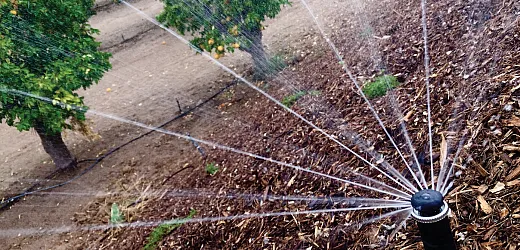
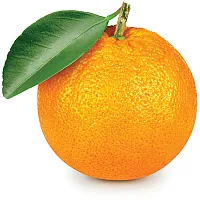
Cover crops keep your trees cooler, which can be a benefit in extreme heat, but can also increase risk of frost damage in winter. Water considerations include whether you have enough to sustain both your cover and cash crops and whether it’s too expensive if you use irrigation—primarily only a concern in California—and whether water filtration can help your crop if you face extreme rainfall events. For pest management, cover crops provide sweet homes for pests from gophers, rats, and snakes to potentially damaging—or potentially helpful—insects. Growers need to be aware of what they might be attracting and whether the benefits outweigh the risks, especially since the benefits to yield or fruit quality aren’t yet proven.
Growers should be considering using cover crops in their citrus orchards though, Strauss and Faber say. In myriad ways, cover crops make your cash crops more resilient, which, when facing threats from extreme weather in a changing climate to disease, is crucial. “Generally speaking,” Faber says, “the benefits of cover crops are there. It’s worth including.”
Self-Study CEU Quiz
Earn 1 CEU in Crop Management by taking the quiz. For your convenience, the quiz is printed below. The CEU can be purchased individually, or you can access as part of your Online Classroom Subscription.
- The number one citrus-producing state in the U.S. is
- California.
- Texas.
- Florida.
- Arizona.
- Citrus orchards in Florida tend to be smaller than in California.
- True.
- False.
- How many of Florida’s orange trees have been killed by the citrus greening disease since it was first detected?
- Less than 10%
- One-quarter.
- More than half.
- Three-quarters.
- Cover crops have been shown to improve
- the number and types of soil bacteria and fungi.
- citrus yield.
- citrus fruit quality.
- None of the above.
- In citrus, you want to let your cover crop go to seed.
- True.
- False.
- Which of the following is recommended in the article for Florida citrus growers to do with their cover crops before the rainy season ends?
- Fertilize their cover crops
- Irrigate their cover crops.
- Mow their cover crops and plant the next round.
- Perform a deep tillage operation.
- Sarah Strauss’s team in Florida found that the best cover in citrus orchards seems to be
- non-legumes.
- weeds.
- perennial peanuts.
- a mix of legumes and non-legumes.
- Cover crops keep your citrus trees cooler.
- True.
- False.
- Cover crops can sometimes attract unwanted pests.
- True.
- False.
- The economic benefits of planting cover crops in citrus are
- primarily found in the increased fruit quality.
- generally negative.
- generally positive.
- unknown.
Text © . The authors. CC BY-NC-ND 4.0. Except where otherwise noted, images are subject to copyright. Any reuse without express permission from the copyright owner is prohibited.




